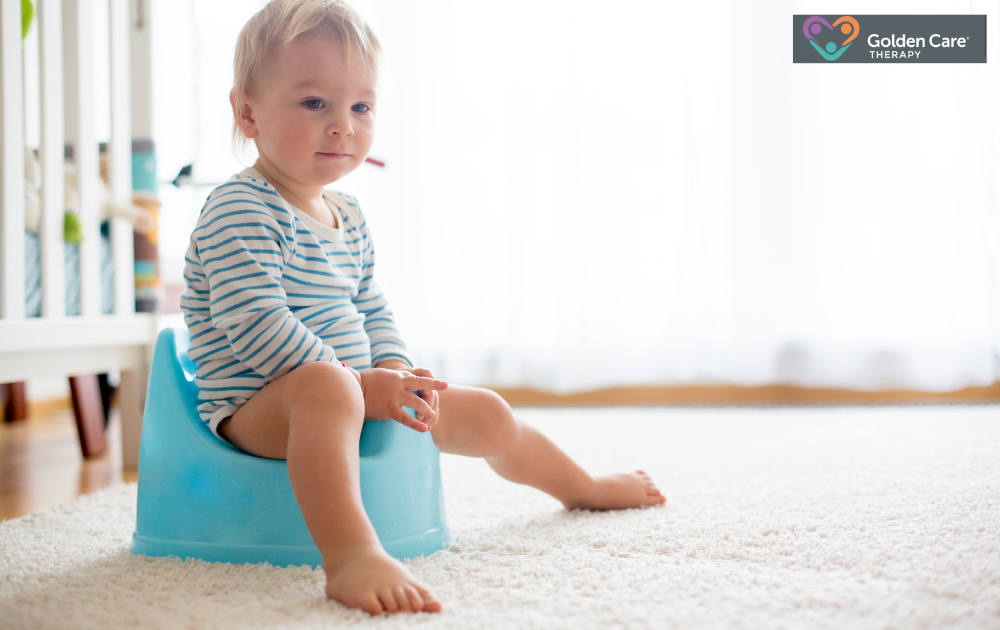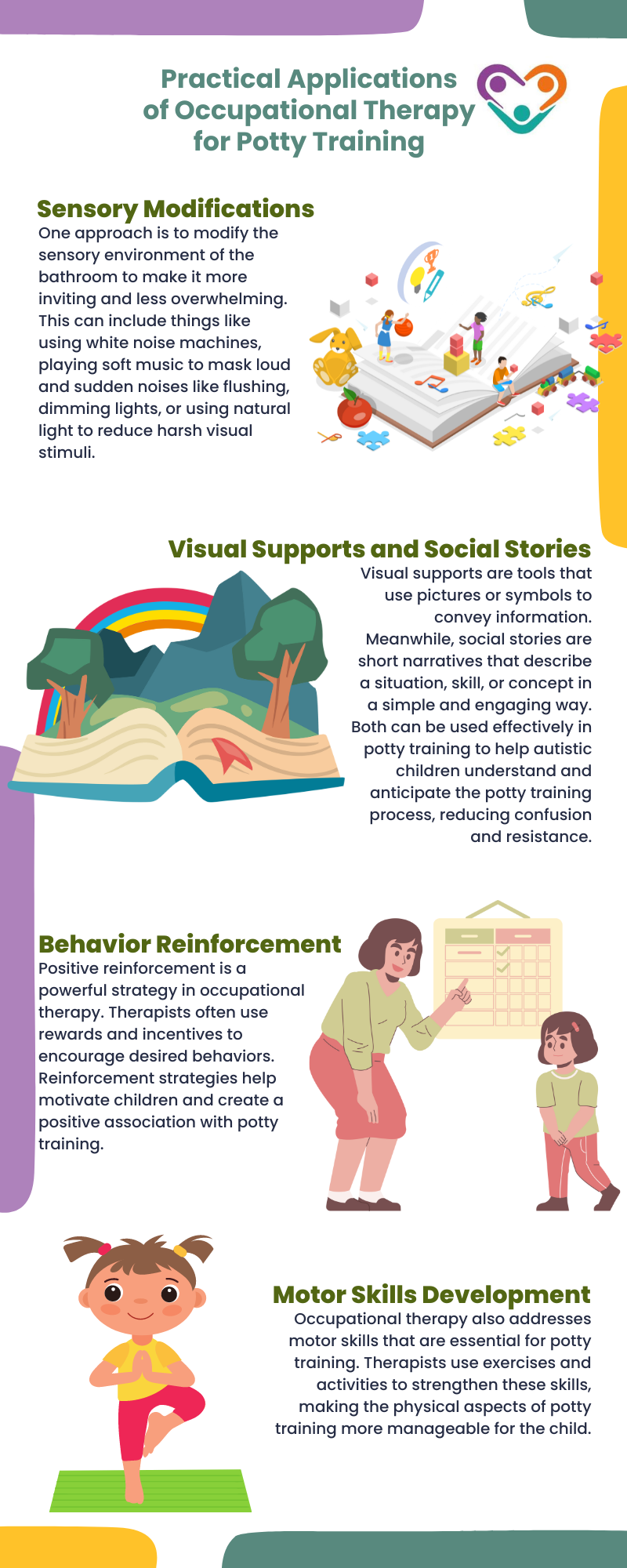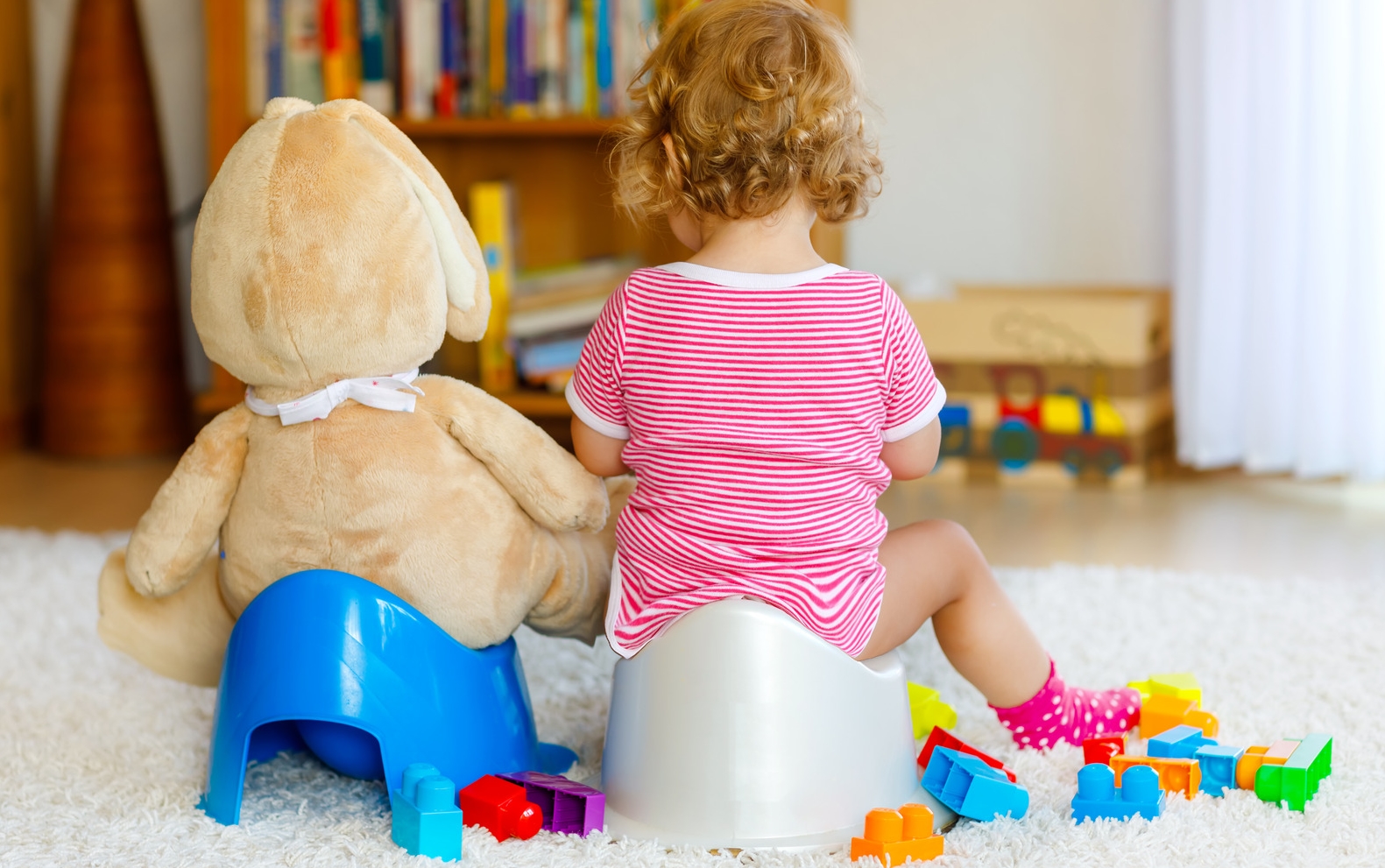Potty training is a significant milestone in a child’s development, representing a step towards greater independence and self-care. For children with autism, this process can present unique challenges that require specialized strategies and support.
Occupational therapy is one such avenue that has shown promise in aiding children with autism to achieve success in potty training. But how exactly can occupational therapy assist with potty training? Let’s take a look.

Can Occupational Therapy Help With Potty Training?
Yes, occupational therapy can help with potty training. Occupational therapists work with children to develop the necessary skills for successful toilet use. They assess the child’s physical, sensory, and cognitive abilities to identify any barriers to potty training.
OTs use various techniques and interventions to improve the child’s motor skills, such as balance and coordination, which are essential for getting on and off the toilet. They also address sensory processing issues that may make the bathroom environment overwhelming for some children.
Through tailored strategies, OTs can help children become more comfortable and confident with the potty training process.
Additionally, occupational therapy can support the development of routines and provide guidance on behavioral strategies. OTs work with parents to create a consistent potty training schedule and offer advice on how to respond to accidents or resistance. They can introduce visual aids and social stories to help children understand and follow the steps of using the toilet.
By addressing both the physical and behavioral aspects of potty training, occupational therapy offers a comprehensive approach that can significantly aid children in achieving independence in this important area.

The Challenges of Potty Training among Autistic Children
Children with autism often face several hurdles that can complicate potty training. These challenges stem from a variety of factors, including sensory sensitivities, communication difficulties, and issues with routine and transitions. Understanding these barriers is crucial in developing effective potty training strategies.
Sensory Sensitivities
Many children with autism have heightened or reduced sensitivity to sensory stimuli. This can make the bathroom environment overwhelming or uncomfortable. The sound of flushing, the feel of the toilet seat, or the smell of cleaning products can all contribute to sensory overload.
Conversely, some children may have a high pain threshold and not notice the physical sensations associated with needing to use the bathroom.
Communication Difficulties
Communication barriers are another significant challenge. Children with autism may have difficulty recognizing and articulating the need to use the toilet. They might not be able to express discomfort or the urge to go, making it harder for caregivers to respond promptly and appropriately.
Routine and Transition Issues
Children with autism often thrive on routine and can find changes or transitions distressing. Potty training introduces new routines and requires transitions from familiar, comfortable activities to using the bathroom. This can be particularly challenging for children who are rigid in their routines and resistant to change.

The Role of Occupational Therapy in Potty Training
Occupational therapy is a client-centered practice that aims to help individuals develop, recover, or maintain the skills needed for daily living and working. For children with autism, occupational therapy can provide tailored interventions that address the specific challenges they face with potty training.
Assessment and Individualized Planning
The first step in occupational therapy for potty training is a comprehensive assessment. This assessment considers the child’s sensory preferences, communication abilities, motor skills, and behavioral patterns. By understanding these aspects, the occupational therapist can create an individualized potty training plan that caters to the child’s unique needs.
Sensory Integration Techniques
Occupational therapists often use sensory integration techniques to help children with autism manage sensory sensitivities. This might involve desensitizing the child to the bathroom environment through gradual exposure or incorporating sensory-friendly modifications.
For example, a therapist might introduce soft lighting, reduce noise levels, or use scented candles to create a more comfortable and calming bathroom setting.
Communication Strategies
Enhancing communication is another critical component of occupational therapy in potty training. Therapists might use visual supports, such as picture schedules or social stories, to help children understand the steps involved in using the toilet. Augmentative and alternative communication (AAC) devices can also be used to help non-verbal children express their needs.
Developing Routine and Consistency
Occupational therapists work with children and their families to establish consistent routines around potty training. This might involve creating a structured schedule that includes regular bathroom breaks and using visual or auditory cues to signal when it’s time to go. Consistency helps reduce anxiety and resistance to change, making the potty training process smoother and more predictable for the child.
Practical Applications and Techniques
The practical application of occupational therapy in potty training involves a range of techniques and interventions designed to address the specific challenges faced by children with autism.
Here are some ways occupational therapy can be practically applied:

Collaborative Approach
Successful potty training often requires a collaborative approach involving parents, caregivers, teachers, and therapists. Occupational therapists work closely with families to ensure that potty training strategies are implemented consistently across different environments.
This might involve:
- Educating parents on how to use visual supports, reinforcement strategies, and sensory modifications at home.
- Coordinating with teachers to ensure that potty training routines are followed consistently at school.
- Scheduling regular follow-up sessions to monitor progress, address challenges, and adjust strategies as needed.
Collaboration ensures that the child receives consistent support and reinforcement, which is crucial for successful potty training.
Potty training is a complex process that requires patience, understanding, and specialized strategies. Occupational therapy offers a holistic and individualized approach that can make a significant difference in the lives of children with autism and their families.
If you’re seeking support, Golden Care Therapy provides comprehensive services, including connections to ABA centers in New Jersey, New York, Georgia, and Indiana. Contact us today to book a consultation and learn more about how we can assist with your child’s potty training needs.
Sources:
https://www.abilityinnovations.com/blog/occupational-therapy-and-potty-training
https://blossomtherapychicago.com/how-can-occupational-therapy-support-potty-training



